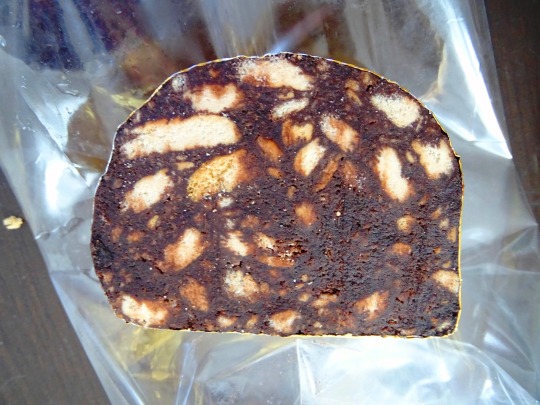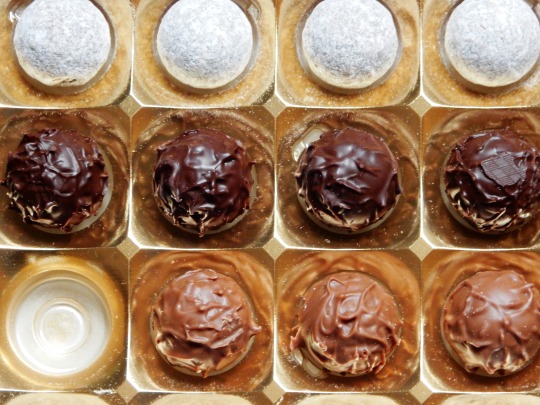#health benefits of common spices
Text
SEVENHİLLSSHOPPİNG - MEGA+ (2)

Iranian saffron, available at Seven Hills Shopping, offers a variety of health benefits that make it a valuable addition to any diet. This spice is known for its powerful antioxidant properties, which can help protect the body against oxidative stress and reduce inflammation. Additionally, saffron has been shown to improve mood and treat depressive symptoms, making it a potentially useful tool for managing mental health conditions. Studies have also suggested that saffron may have cancer-fighting properties, reducing the risk of certain types of cancer. With these benefits in mind, incorporating Iranian saffron into your cooking can be an easy and delicious way to support your overall health. Turkish nuts, such as almonds and pistachios, available at Seven Hills Shopping, are packed with nutrients that can benefit overall health. These nuts are rich in healthy fats, protein, fiber, and a variety of vitamins and minerals, making them a nutritious and satisfying snack. Almonds, for example, are a good source of vitamin E, which can help protect against heart disease and other chronic conditions. Pistachios have been shown to improve cholesterol levels and reduce the risk of heart disease. By incorporating Turkish walnuts into your diet, you can enjoy a variety of nutritional benefits that support overall health and well-being. Turkish spices, such as cinnamon and chili, available at Seven Hills Shopping, offer a variety of health benefits beyond their delicious taste. Cinnamon, for example, has been shown to have anti-inflammatory properties that can help combat chronic inflammation, a common factor in many chronic diseases. Chili peppers contain capsaicin, which has been shown to reduce appetite and aid loosing weight tea, as well as potentially reducing the risk of certain types of cancer. By incorporating Turkish spices into your cooking, you can add flavor and nutrition to your meals while reaping a variety of health benefits.
1K notes
·
View notes
Text
While the purity of Camellia Sinensis is a marvel in itself, the world of tea extends far beyond the simple leaf that is often called a True Tea. Let's talk about flavor-infused tea.

Infused tea
The practice of infusing tea with flavors dates back centuries, with evidence of flavored teas found in ancient Chinese and Indian cultures. Early methods of infusion involved adding herbs, spices, or flowers directly to the tea leaves during steeping. Over time, more sophisticated techniques were developed, such as extracting essential oils from aromatic plants and adding them to the tea.
Today, infused teas are typically created using one of two methods:
Direct Infusion: The most common method involves adding dried herbs, spices, or fruits directly to the tea leaves before steeping. This allows the flavors to infuse naturally into the tea, creating a harmonious blend.
Flavoring Oils: Essential oils extracted from aromatic plants can be added to the tea after steeping. This method allows for precise control over the intensity of the flavor and can be used to create subtle or bold infusions.
One of the most renowned flavor-infused teas is Earl Grey, a black tea infused with the fragrant oil of bergamot orange. The citrusy notes of bergamot dance harmoniously with the rich, full-bodied flavor of black tea, creating a truly exquisite beverage. Earl Grey is a versatile tea that can be enjoyed hot or iced, and it pairs well with a variety of foods.
Aside from Earl Grey, the world of flavor-infused teas is vast and varied. From the delicate floral notes of jasmine tea to the bold fruity flavors of berry teas, there is a flavor combination to suit every palate.

Pictured above: (top) Jasmine infused green tea from Fujian Tea Import & Export Co., (bottom) Blood Orange herbal tea from Harney & Sons Fine Teas. [Blend: Apple pieces, rose hips, hibiscus, beetroot, orange peel, orange flavor, marigold petals, safflower petals.]
Some of the other popular flavor-infused teas include:
Jasmine Tea: A green tea infused with jasmine flowers, offering a delicate floral aroma and a slightly sweet taste.
Chai Tea: A black tea spiced with cardamom, cinnamon, cloves, and ginger, creating a warm and comforting blend.
Fruit Teas: A variety of teas infused with fruit flavors, such as strawberry, raspberry, or peach, providing a sweet and tangy taste.
Fruit teas are excellent for cold-brewed iced tea. I will cover cold-brewing later, so please look forward to that.
When choosing a flavor-infused tea, consider your personal preferences and the occasion. A delicate floral tea might be perfect for a relaxing afternoon, while a bold and spicy chai tea could be a comforting choice on a cold day.
The choice of infusion depends on the desired flavor profile and the characteristics of the ingredients being used. For example, delicate floral flavors may be best achieved using direct infusion, while strong, bold flavors can be created using flavoring oils.
If you wish to create your own infused tea, that will have to be a separate post. For now, it is enough to be able to identify the tea you are brewing so that you can handle it appropriately.
Brewing infused teas requires a balance of technique and intuition. First, identify the ingredients. When brewing a cup of tea, it's good to know what temperature and length of time to steep your tea for.
A tea labeled "Peach" may be a white tea with peach flavoring, and it may be best to brew it at a temperature appropriate for white tea. Blends may consist of varying ingredients that require different temperatures, so some experimentation may be in order to find the best brewing temperature to get the most of each flavor.

Herbal tea
Beyond the True Tea, there lies a world of herbal teas, each offering a unique blend of flavors and health benefits. Herbal teas are made from a variety of plants, including herbs, spices, and fruits. They are often enjoyed for their medicinal properties, as well as their delicious taste.
As no part of an herbal tea contains the Camellia Sinensis plant, these teas are not considered "True Teas". That does not mean we cannot enjoy them, however.
For the most part, an herbal tea will not contain any caffeine, unlike the tea produced from the Camellia Sinensis plant. This makes them more suitable to enjoy in the evening or late hours.

Pictured above: (from top to bottom) Roses, honeysuckle, chrysanthemums, mint and lavender.
Some popular herbal teas include:
Chamomile Tea: Made from chamomile flowers, this tea is known for its calming and relaxing properties.
Peppermint Tea: Made from peppermint leaves, this tea is refreshing and aids digestion.
Ginger Tea: Made from ginger root, this tea is warming and can help soothe an upset stomach.
Hibiscus Tea: Made from hibiscus flowers, this tea has a tart, fruity flavor and is rich in antioxidants.
As with many blends, it is helpful to experiment a little with the temperature and steep time to get the most of your tea. Intuition will follow experience.

The ideal steeping temperature for infused teas and herbal teas can vary depending on the specific ingredients and desired flavor intensity. However, here are some general guidelines:
Delicate floral or fruity teas: 175-185°F (79-85°C)
Bold, spicy teas: 195-212°F (90-100°C)
Herbal teas: 175-212°F (79-100°C), depending on the specific herbs used
Serving suggestions: Cream is usually not served with fruit teas, as the acidity in some will cause the milk to curdle. Lemon slices are commonly served with Earl Grey, however, as with the fruit tea, lemon can also cause cream to curdle. Sugar or honey are appropriate for nearly any tea.
It's always a good idea to experiment with different temperatures to find the perfect brew for your taste. I hope this has been informational and helpful to my students who wish to become better acquainted with tea.

30 notes
·
View notes
Text

There are different ways of adding clove to your diet and one easy way is having clove tea. 🫖
Not only is this spice is used for its strong aroma and flavor but also for its medicinal properties, health benefits. Packed with antioxidants, cloves are super healthy and to enjoy the health benefits, one must make them to their daily diet.
.
🫖 - Cloves also have antiseptic, antiviral, and antimicrobial properties that keep common infections, cold, and cough at bay.
🫖 - Drinking this tea will help you improve your digestion. Healthy digestion will help you lose weight quickly.
🫖 - If you suffer from gum or tooth pain then having clove tea is good for you.
158 notes
·
View notes
Text
With cold and flu season fast approaching, I want to post herbal recipes I am finding. These are not mine, and not medical advice!!!
Plant Origins of Thieves Oil
Clove: clove buds originate from the evergreen tree Syzygium aromaticum or Eugenia caryophyllata. These flower buds contain up to 20 percent essential oil, and are incredibly pungent, thanks to the major active chemical component called eugenol.
Rosemary: rosemary is a popular herb that comes from a small evergreen plant that belong to the mint family. It is native to the Mediterranean region, and possesses strong anti-inflammatory properties .
Eucalyptus: eucalyptus trees are native to Australia, Tasmania, and nearby islands. They’re the popular plant exclusively enjoyed by koala bears, and come in many different species. The oil is derived from the leaf of the eucalyptus tree, and is commonly used in cold remedies.
Cinnamon: cinnamon oil and the dried spice cinnamon both come from the bark of the true cinnamon tree (Cinnamomum zeylanicum). Essential oils that come from the leaf, bark and root of the cinnamon tree are much different, but the most common used version in Thieves oil is the cinnamon leaf. The active component in cinnamon bark essential oil is cinnamaldehyde.
Lemon: lemons come from a small tree in the Rutacea family. Lemon essential oil is derived by cold-pressing the peel of the lemon fruit, which is rich in different phytonutrients and beneficial compounds.
Thieves Oil Recipe
As long as you have all of the necessary essential oils on hand, you can easily make your own version of Thieves oil at home.
Ingredients: Master Blend
80 drops of clove essential oil
70 drops of lemon essential oil
40 drops of cinnamon essential oil
30 drops of eucalyptus essential oil
20 drops of rosemary essential oil
Method:
Combine all of the above essential oils in a dark amber coloured 15 milliliter (0.5 fluid ounce) glass bottle. Make sure you store it a cool, dry place, away from heat and light.
Benefits and Uses of Thieves Oil
This thieves oil recipe can be used to address certain health ailments, check out the benefits and uses below! Not medical advice
1. Relief from Aches and Pains
This Thieves oil recipe is loaded with plenty of anti-inflammatories to ease muscular and joint aches and pains. Rosemary and eucalyptus oil have actually been found to relieve rheumatoid arthritis, as well as muscle and joint aches and pains. You can dilute Thieves oil in a carrier oil (like jojoba oil, almond oil or grapeseed oil) to be used topically on the ache or pain. Typically the ratio is 1 drop essential oil to 4 drops carrier oil.
2. Immune System Support
Thieves oil was used to protect the “thieves” from the Black Plague, so you can be rest-assured that this oil provides some hefty immune support. Clove and rosemary essential oils are powerful antibacterials and anti-fungals. They’ve both been shown to have significant anti-microbial effects against dangerous bacteria like Staphylococcus epidermidis, Escherichia coli, and Candida albicans.
Massage the blend on your feet, lower back, neck and behind your ears for daily immune support. You can also diffuse Thieves oil to allow the essential oil molecules to enter your blood stream after they’ve entered your lungs! To get Thieves oil into your lungs is to diffuse the oil in a diffuser. Diffuse 15-20 drops of Thieves oil for 15 minutes, 3-4 times a day.
By live life fruit.
#witchcraft#witchy vibes#witch aesthetic#witchy#witchblr#witchythings#witches#witch#spells#witchcore#spellcraft#spellwork#spellcasting#witch tips#witchy herbs
70 notes
·
View notes
Text

There are several countries known for having some of the healthiest cuisines in the world, characterized by fresh, whole foods, a variety of fruits and vegetables, lean proteins, and balanced flavors. Some of these countries include:
1. Japan: The traditional Japanese diet is based on fish, seafood, rice, tofu, vegetables, and fermented foods like miso and kimchi. Japanese cuisine is known for its emphasis on fresh, seasonal ingredients and simple, flavorful dishes.
2. Greece: The Mediterranean diet, which is commonly found in countries like Greece, is rich in olive oil, whole grains, fruits, vegetables, nuts, seeds, and fish. The diet is high in antioxidants, healthy fats, and fiber, and is associated with numerous health benefits.
3. Italy: Italian cuisine is known for its emphasis on fresh, high-quality ingredients such as tomatoes, olive oil, garlic, herbs, and whole grains. The Mediterranean diet, common in Italy, is associated with a lower risk of heart disease and other chronic conditions.
4. South Korea: Korean cuisine features a wide variety of fermented foods, vegetables, lean proteins, and grains. Kimchi, a staple in Korean cuisine, is a fermented vegetable dish that is rich in probiotics and has numerous health benefits.
5. India: Indian cuisine is characterized by a wide array of spices, legumes, vegetables, whole grains, and lean proteins like lentils and chickpeas. Many traditional Indian dishes are vegetarian or vegan, making them rich in plant-based nutrients.
6. Thailand: Thai cuisine is known for its bold flavors, fresh herbs, and aromatic spices. Thai dishes often feature a balance of sweet, sour, salty, and spicy flavors, and incorporate plenty of fresh fruits, vegetables, and seafood.
7. Morocco: Moroccan cuisine is rich in spices, herbs, nuts, seeds, vegetables, and lean proteins like fish and poultry. Tagines, a traditional Moroccan stew, often contain a variety of vegetables and are cooked slowly to infuse flavors.
#healthy food#food for thought#food fight#comfort food#fast food#food photography#foodie#food#foodpics#foodlover#japanese food#foodmyheart#tw food#healthy salad recipes#lunch recipes#pasta recipes#pasta recipe#salad recipes#soup recipe#recipe#reciprocity#recipies#recipes#cozy autumn#cozy fall#cozyhome#cozy cozy#cozy living#autumn cozy#cozy art
10 notes
·
View notes
Text
Magic in Your Pantry: Everyday Items, Extraordinary Remedies
In the hustle and bustle of modern life, it is easy to overlook the hidden treasures that lie within the confines of our kitchen.
Beyond the daily rituals of cooking and meal preparation, our pantry holds a secret arsenal of everyday items that double as extraordinary remedies.
Let’s discover into the enchanting world of common kitchen ingredients that possess magical properties for health, beauty, and overall well-being.

Magic in Your Pantry
Healing Elixirs
Your pantry might just be the potion cabinet you never knew you had. Explore the healing wonders of ginger, honey, and lemon, a trio that works like magic to soothe sore throats and boost the immune system.
Uncover the ancient remedy of turmeric for its potent anti-inflammatory properties, turning your kitchen into a wellness haven.
Beauty Spells with Kitchen Staples
Step into the world of beauty magic as your pantry unlock ingredients that can transform your skincare routine.
Discover the exfoliating powers of oats, the moisturizing charm of coconut oil, and the blemish-banishing qualities of tea tree oil.
These simple yet powerful concoctions will leave your skin radiant and refreshed.
Culinary Charms for Digestive Harmony
Beyond their culinary uses, everyday spices can work wonders for your digestive system.
Explore into the enchanting world of cumin, fennel seeds, and peppermint, as they cast spells to alleviate indigestion and bloating.
Your pantry becomes a potion master's workshop, home remedies for anything that not only satisfy the taste buds but also nurture your gut.
The Sleep Elixir
Bid farewell to sleepless nights with the magical sleep elixirs tucked away in your pantry.
Unlock the calming properties of chamomile tea, the tranquilizing effects of warm milk, and the hypnotic allure of lavender.
Transform your bedtime routine into a peaceful ritual, grasping the restorative power of these simple ingredients.
Read: 7 Pain-Relieving Home Remedies for Menstrual Cramps
Warding Off the Common Cold
With seasonal changes often comes the unwelcome guest that is the common cold.
Fear not, for your pantry holds the key to a potent potion that can help ward off sniffles and sneezes.
Include the power of garlic, honey, and apple cider vinegar; a triumphant trio that can boost your immune system and keep those pesky cold germs at bay.
Stress-Relieving Brews
In the mid of a hectic day you can find solace in the stress-relieving brews concealed within your pantry.
Chamomile tea, known for its calming properties, can be your go-to elixir for moments of tension.
Green tea, rich in antioxidants, not only promotes relaxation but also brings a myriad of health benefits.
Transform your pantry into a sanctuary, where a soothing cup of tea becomes your remedy for stress and anxiety.
Cleaning Concoctions
Your pantry is not just a source of nourishment for your body; it is also a treasure trove for keeping your living spaces pristine.
Vinegar, baking soda, and lemon can work in tandem to create powerful and natural cleaning concoctions.
Bid farewell to harsh chemicals as you embark on a journey to transform your pantry into a sustainable cleaning arsenal, contributing to a healthier home and environment.
more >>>
8 notes
·
View notes
Text
Plant chemicals are so cool! Unit 9
The most amazing thing I know about nature is the ability of plants to produce compounds that serve incredible health benefits to humans. I think it is other-worldly that the flora that has existed alongside humans for so many years can provide us with so many cures to various ailments. Getting personal, I have a very unfortunate family history containing cancer, diabetes, and immune deficiencies that has taken a lot from me. These devastating occurrences have made me all-too-aware of the impacts that lifestyle and food have on human health, and in many ways being in science does not ease my anxieties. However; learning about plant secondary metabolites that serve as phytonutrients in the human body has made me hopeful and inspired to learn more, not just for interest, but to serve my health as well. Buckle up for many science terms and lots of plant facts that I have stored in my brain through my academic career!
Throughout my summary on plant phytonutrients (plant compounds that serve proven health benefits in humans), I will strive to present this information as a whole by connecting plants to human health to satisfy some of Tilden's Principle's of Interpretation (Beck et al. 2018, p. 84). Did you know that the colour of the fruits and vegetables you eat actually correlate to their nutrition? The different pigments produced in plants, such as your orange carrots and red peppers, are caused by secondary metabolites. Orange colouring is caused by the production of beta-carotene, this is then utilized by our body to make vitamin A, making it crucial to our health because we cannot synthesize this on our own. Colours such as purple and dark reds are caused by anthocyanins, these are compounds that aid in our bodies ability to fight tumour producing cells. Actually many plant metabolites, such as glucosinolates from Broccoli, aid in tumour-suppression and have anti-inflammatory properties. Spices such as turmeric have been used for centuries as a treatment for inflammation and diabetes due to the compound 'curcumin'. This bioactive molecule has been increasingly applied to modern medical studies due to its efficacy in improving glucose regulation and suppressing various cancer cell formations.
I won't add in too much more, as I know that was a lot of information. One more area I do want to touch on is the use of genetic engineering to increase yields/improve taste, but decreasing health benefits in the process. An example of this is removing the class of compounds "cucurbitacins" from common cucumbers due to the bitter taste it gives them. These compounds provide various health benefits such as anti-inflammatory and anti-cancer effects, and through the removal of these it has made cucumbers far less beneficial to our health.
I believe much of what our bodies need is provided by nature, not to say I disprove of modern medicine in any way, but our values in food as a society has been greatly impacted due to prices/availability. I want to work plants to improve nutritional concentrations of food, and helping humans be healthier through what has already been granted to us by nature.
Thanks for reading!
Alleeya
Beck, L., Cable, T. T., & Knudson, D. M. (2018). Interpreting Cultural and Natural Heritage: For A Better World. Sagamore Publishing.
7 notes
·
View notes
Text

🎃 Few of our common crops have such a long and storied history as the humble pumpkin! These orange gourds are part of our family traditions, our favorite meals, and the cultural fabric of our nation. Here are some facts about pumpkins:
1. A pumpkin is, surprisingly, considered a fruit.
2. The name "pumpkin" comes from the German word "pepon," meaning "large melon."
3. It is believed that pumpkins originated in Central America over 7,500 years ago.
4. Pumpkin seeds contain many health benefits as they're filled with vitamins, minerals and unsaturated fatty acids.
5. Pumpkin flowers are edible.
6. There are more than 45 different kinds of pumpkins.
7. Pumpkins are grown on every continent except Antarctica.
8. About 90% of a pumpkin is water.
9. Pumpkin shells used to be woven into mats.
10. Jack -o'-lanterns originated from an Irish myth, and before using pumpkins, people in Ireland and Scotland created these now-Halloween-staples with turnips and potatoes instead.
11. Pumpkins were once thought to be a cure for snakebites.
12. Pumpkins are native to Central America and Mexico. Originally small and bitter, they were selectively bred by Central and Native Americans to be bigger, fleshier, and sweeter.
13. The world’s heaviest pumpkin weighed more than a ton. In 2016, Mathias Willemijns of Belgium grew a record-breaking pumpkin that weighed a whopping 2,624.6 lbs. To put that into perspective, his pumpkin weighed roughly the same as a small car. To this day, the pumpkin still holds the Guinness World Record for the heaviest pumpkin in the world.
14. Each pumpkin contains about 500 individual seeds.
15. Pumpkin spice does not actually contain pumpkins. Pumpkin spice or pumpkin pie spice is only the spice mix that you commonly use in making pumpkin pie. Rather than pumpkins, it typically contains cinnamon, nutmeg, ginger, and cloves. Finally, allspice may also sometimes be added into the mix.
16. Some pumpkins are poisonous.
Although most parts of pumpkins are edible, some varieties of pumpkins contain toxins called cucurbitacins. These are bitter compounds that protect some pumpkins against animals that may want to eat them. Consuming a large amount of cucurbitacin can lead to poisoning, which some refer to as “toxic squash syndrome”.
17 notes
·
View notes
Text
okay really i have to know, someone please help me out here.
so the first time I ever tried Indian food was a little over a year ago. My sibling has a close friend who is Indian, so they have more experience in this than I do. One day, they were craving some tasties, and ordered some paneer tikka masala from a little vegetarian-based Indian place ten minutes away. It smelled divine. Having never tried Indian, but curious, I asked if i could try some. They let me have a taste of it, smear-scooped onto some fresh garlic naan.
Y'all. It was so good. It was warm and spicy and complex and lovely. I thanked them for the taste and went back to my own dinner.
They had a ton of leftovers, and a general habit of not eating leftovers. The little half-full tub of enticing spicy heaven sat in the fridge taunting me every time I opened the door. Echoes of the flavor teased at my tongue. So after the paneer tikka masala sat in the fridge for two nights, on the third night, I asked them if i could have the rest and they said go for it.
Now here's the thing. I have, for the past 5 years or so, had some manner of food sensitivity that I have not been able to pinpoint that torments me at least once a week. It is not IBS, and not consistent enough to signal true danger to my health, but is mostly an annoyance. A half-hour to an hour after eating, some nights are spent with tummy cramps and other unpleasantness. Still don't know what's causing it.
But this tikka masala. Whatever is in it, it has the exact opposite effect of whatever component of my typical diet has been tormenting me off and on. Even more so than the flavor, the thing that makes me practically cry every time i have some is just how good my tummy feels. It's warm and satisfied and comfortable, like the intestinal equivalent of being snuggled up on the couch with a cozy blanket and a book on a rainy day.
I've tried looking up common ingredients and recipes for this dish, trying to identify what component it is that's making me feel so good after dinner I could cry. Most of the ingredients I see are fairly familiar and already part of my diet - onion, turmeric, cumin, ginger, tomato, etc. I suppose it could be the yogurt? Or the paneer itself? The restaurant in question described it as cottage cheese or house cheese. I'm not generally a fan of yogurt, but I do eat cottage cheese. I also suspect it could be some spice in the garam masala, which I understand varies depending on the chef. But being of average white bread American stock, I'm not familiar enough with what constitutes good garam masala to know what would go into this spice blend and in what ratios, or if there is some particular variety of yogurt or cheese required for this dish. There's a lot of Indian food and grocery stores in my area, but it's still hard to source a specific ingredient when I can't identify it accurately.
I just want to figure out what this magical digestive-support ingredient is so I can try to incorporate it into my diet more. I just want every meal to sit as well in my body as this one does. If anyone knows anything about Indian food and cooking, and the health benefits of traditional Indian food, I'd appreciate your thoughts!
4 notes
·
View notes
Text
Some may wander onto the church's balcony, never once sparing a glance at the rolling rack of plants. "They're just plants. Who cares? Doesn't Eva grow flowers over there?" Sure, there's a scant number of plants growing there. Nothing seems to support much life over there. No signs of any vegetables from those seed packets we give her, either.
(In all likelihood, the developers probably thought that few would notice that section. Fleshing out the balcony with more plants might've been deemed a pointless gesture.)
What many don't realize, however, is that many plants are medicinal! Consider that the next time you pass by the herb pots at the grocery store. Common thyme, for example, is antibacterial! It can also be steeped as a tea for sinus infections, and that's just a small fraction of what it can do!
The central shelf on the rolling rack carries rosemary, along with a plant I could not identify. Just generic, silly nonsense, right?
Wrong! Rosemary is more than just a kitchen spice. It's a fantastic herb for the brain!
It acts as a brain stimulant!
It aids with memory!
It aids blood circulation to the brain!
It aids with treating early onset dementia/Alzheimer's!
It acts as an antidepressant!
It acts as an antiviral!
It aids concentration!
It also has anti-anxiety properties!
Where the revenants are concerned, I'd say that's quite the vital herb! With the help of scavenged alcohol and some sterile jars, bottles, and lids, there's potential for the crafting-- and trading-- of rosemary tinctures! (In the absence of proper sterilization, whatever they can use to rinse would have to do. Above all else, these chosen jars and bottles would need to be airtight enough to prevent oxidization. An oxidized tincture is not desired-- it can lose a lot of those helpful properties!)
If water is still consumed by the revenant population (and if it is, I haven't seen it mentioned)... they can take these tinctures through water. A couple drops or barely a spoonful would go a long way! Some may attempt to slip these under their tongues and get quite the burn for their trouble. At Home Base's bar, there are numerous bottles of blood bead leukocytes. These could possibly handle a small dosage... if our favorite revenants can stand to hold the first sip for ten seconds.
Now, the uppermost shelf of the rack holds some decorative plants... and some parsley, growing out of a generically-labelled tea tin. Parsley? Really?!
Parsley's got quite the high vitamin content, though. I don't know if revenants require the same intake allotment for vitamins like humans have-- I've never seen it mentioned before. But if you factor in the maintenance of the host' body, vitamins are just as important! Whether or not the BOR parasite directly benefits remains to be seen, but for now, we're covering the fun stuff.
What the heck does parsley do, anyways? Well...
It's got stupidly high amounts of Vitamin K, which is not only good for your bones, but also boosts blood production!
It's full of other key vitamins and antioxidants!
It acts as a diuretic!
It also helps to keep your eyes healthy!
In the grand scheme of things, it might not seem like that big of a deal. But it could help boost a revenant's regeneration. Code Vein flip-flops a bit on how regeneration works, especially with gameplay in mind. Could parsley increase the healing amount, or even the number of times it can be tapped into? Quite possibly! It could also be circulated to the shelters, and thus assist blood donors with recuperating quicker. The diuretic properties can also be utilized to help flush status effects quicker. And as for the eye health of revenants far and wide, wouldn't that go a long way? That's a lot less stress on them, isn't it?
Though I cannot identify the other plants on the rack, that doesn't mean that they're lacking in benefits. There are some flowers that can be eaten and be used in medicine. Calendula, for example, is an edible flower that can be used to aid the healing of wounds. Besides, it's such a bright and cheery flower-- why not keep a few blooms just to look, and let them go to seed, while you're at it? (Calendula is very easy to grow-- save those seeds!)
Another one is chrysanthemum, which is another edible flower. Its primary benefit is eye health, and I believe it's even stronger than parsley in this regard. (Do not consume the store-bought ones, as they have been treated with a myriad of extremely harmful chemicals! The best way to avoid this is by growing them yourself. Remember to buy non-neotic seeds; these are better for pollinating insects and keeps you safe, too!)
And if the parts above the soil aren't safe for consumption, remember that the roots can still be used! Roots can have loads of medicinal properties! Some can be edible, while others can be dried and infused into oils! An example.of an edible root is the humble dandelion. Though the entire plant is completely edible, its taproot is a potent liver detoxifier! Should it be roasted and brewed into tea, it tastes just like coffee!
Even if revenants aren't taking these medicines themselves, consider how much it would benefit the human population living in the shelters. If we really gotta split hairs, the medicinal benefits could carry over into blood donations. Entire categories of enhanced blood could be produced by the shelters, and distributed to the revenant-occupied shelters. In times of disease where the latter is concerned, these unique products could be life-saving. Even then, the more positive trading arrangement may improve human and revenant relations-- a massive issue omnipresent within the Gaol of the Mists. This isn't just food and decoration; it's something greater.
Just a little thing that makes life a bit more bearable.
#code vein#time for me to be positively boring again#i talk botany things and everybody's eyes glaze over#no but all joking aside#moar context for the hows and whys of eva's plants#or at least the scant handful i can identify#sourced the parsley info from a couple websites#the rosemary one was what i had written down in my little medicine book#plants are very important to me and i like talking about their benefits#someone will probably say this isn't fda approved#I'M not fda approved#i just like talking about the interesting things#note that i'm a novice at the botanical things and i only know what i know#code vein meta#archival edit
13 notes
·
View notes
Text
DISCOVER NATURE'S REMEDIES IN YOUR TEACUP - SIMPLE, EFFECTIVE, AND DELICIOUS SOLUTIONS FOR EVERYDAY HEALTH CONCERNS
Herbal teas have been used for centuries as natural remedies for a wide range of common ailments. These soothing brews offer a gentle, accessible way to support our health and well-being. In this comprehensive guide, we'll explore how to use herbal tea bags to address everyday health issues, complete with recipes and preparation methods. Let's dive into the world of herbal healing and discover the power of plants in your teacup.
Discover How Herbal Tea Bags Can Be Used as Natural Remedies for Common Ailments Like Stress, Insomnia, And Digestive Issues.
Herbal tea bags offer a convenient and effective way to harness the healing power of plants. For those struggling with stress, a cup of chamomile or lavender tea can provide calming relief. Insomnia sufferers might find solace in valerian root or passionflower tea. And for digestive discomfort, peppermint or ginger tea can soothe and settle the stomach. These simple remedies are just the beginning of what herbal teas can offer.
Understanding Herbal Tea Bags
Herbal tea bags offer a convenient way to enjoy the benefits of medicinal plants. Unlike traditional teas made from the Camellia sinensis plant, herbal teas (also known as tisanes) are made from a variety of herbs, flowers, roots, and spices. Each herb brings its own unique set of properties and potential health benefits.
Key benefits of using herbal tea bags:
Convenience and ease of use
Consistent dosage
Portable and travel-friendly
Wide variety of flavors and blends available
Learn To Prepare Effective Herbal Tea Blends for Immune Support, Headache Relief, And Allergy Symptoms Using Simple Tea Bags.
Creating effective herbal blends is both an art and a science. For immune support, consider combining echinacea and elderberry teas. To combat headaches, a blend of feverfew and peppermint can be remarkably effective. For allergy relief, nettle tea paired with peppermint can help ease symptoms. By learning to combine complementary herbs, you can create powerful, personalized remedies.
COMMON AILMENTS AND THEIR HERBAL REMEDIES
Stress and Anxiety
Herbs:
1. Chamomile,
2. Lavender,
3. Lemon balm,
4. Passionflower
Calming Chamomile Blend recipe
1 chamomile tea bag
1 lavender tea bag
1 cup hot water
Optional: 1 tsp honey
Instructions for making of Calming Chamomile Blend
Steep both tea bags in hot water for 5-7 minutes.
Remove bags, add honey if desired, and sip slowly.
Insomnia
Herbs:
1. Valerian root,
2. hops,
3. passionflower,
4. chamomile
Sweet Dreams Tea Recipe
1 valerian root tea bag
1 chamomile tea bag
1 cup hot water
Optional: 1 tsp honey or a splash of milk
Instructions of Sweet Dreams Tea Recipe
Steep tea bags in hot water for 10 minutes.
Add honey or milk if desired.
Drink 30-60 minutes before bedtime.
Digestive Issues
Herbs:
1. Peppermint,
2. Ginger,
3. Fennel,
4. Chamomile
Tummy Tamer Blend Recipe
1 chamomile tea bag
1 peppermint tea bag
1 ginger tea bag
1 cup hot water
Optional: A slice of lemon
Instructions for making Tummy Tamer Blend Recipe
Steep tea bags in hot water for 5-7 minutes.
Add a slice of lemon if desired.
Sip slowly after meals or when experiencing digestive discomfort.
Colds and Flu
Herbs:
1. Echinacea,
2. elderberry,
3. ginger,
4. lemon balm,
5. thyme
Immune Booster Tea Recipe :
1 echinacea tea bag
1 elderberry tea bag
1 cup hot water
1 tsp raw honey
A squeeze of fresh lemon juice
Instructions for making Immune Booster Tea Recipe
Steep tea bags in hot water for 10 minutes.
Remove bags, add honey and lemon juice.
Drink 2-3 cups daily when feeling under the weather.
Headaches
Herbs:
1. Feverfew,
2. Peppermint,
3. Lavender,
4. Willow bark
Headache Relief Blend Recipe :
1 feverfew tea bag
1 peppermint tea bag
1 cup hot water
Instructions For making Headache Relief Blend Recipe
Steep tea bags in hot water for 5-7 minutes.
Drink at the onset of a headache and repeat as needed.
Menstrual Cramps
Herbs:
1. Ginger,
2. Chamomile,
3. Red raspberry leaf,
4. Cramp bark
Monthly Comfort Tea Recipe :
1 ginger tea bag
1 red raspberry leaf tea bag
1 cup hot water
Optional: 1 tsp honey
Instructions for Making Monthly Comfort Tea Recipe :
Steep tea bags in hot water for 7-10 minutes.
Add honey if desired.
Drink 1-2 cups daily during menstruation.
Allergies
Herbs:
1. Nettle,
2. Butterbur,
3. Peppermint,
4. Green tea
Allergy Relief Blend Recipe:
1 nettle tea bag
1 peppermint tea bag
1 cup hot water
Optional: 1 tsp local honey
Instructions for Making Allergy Relief Blend Recipe
Steep tea bags in hot water for 5-7 minutes.
Add local honey if desired.
Drink daily during allergy season.
Explore the world of herbal healing with our comprehensive guide to using tea bags for everyday health concerns.
The world of herbal healing is vast and fascinating. From the calming effects of chamomile to the digestive support of peppermint, each herb has its own story and unique properties. By exploring different herbs and their effects, you can build a natural health toolkit to address a wide range of everyday concerns. This guide serves as a starting point for your journey into herbal healing, offering insights into some of the most commonly used and effective herbs.
PREPARATION METHODS AND TIPS
Water Temperature
Different herbs require different water temperatures for optimal extraction:
Delicate herbs (e.g., chamomile, mint): Use water just off the boil (around 190°F/88°C)
Robust herbs (e.g., ginger, echinacea): Use boiling water (212°F/100°C)
Steeping Time
Steeping times vary depending on the herb and desired strength:
Most herbal teas: 5-7 minutes
Roots and barks: 10-15 minutes
For a stronger brew: Increase steeping time or use two tea bags
Enhancing Flavor and Efficacy
Add a squeeze of lemon to boost vitamin C content and enhance flavor
Use raw honey for added health benefits and natural sweetness
Combine complementary herbs for synergistic effects
Storage
Keep herbal tea bags in an airtight container away from light, heat, and moisture
Check expiration dates and use within 6-12 months for best quality
Safety Considerations
While herbal teas are generally safe, it's important to keep the following in mind:
Consult with a healthcare professional before using herbal remedies, especially if you have pre-existing health conditions or are taking medications
Be aware of potential allergies or sensitivities to certain herbs
Pregnant and breastfeeding women should exercise caution and consult their healthcare provider before using herbal teas
Some herbs may interact with medications or have side effects when consumed in large quantities
Conclusion
Herbal tea bags offer a simple, effective, and enjoyable way to address common ailments naturally. By understanding the properties of different herbs and how to prepare them properly, you can create your own personalized natural pharmacy right in your kitchen. Remember to listen to your body, start with small amounts, and enjoy the journey of discovering which herbal blends work best for you. With a warm cup of herbal tea in hand, you're well on your way to brewing wellness and supporting your body's natural healing processes.
2 notes
·
View notes
Link
Get your copy off Eat So What! & Eat to Prevent and Control Disease Boxset (6 Books in 1): https://www.lafonceurbooks.com/l/eswetpacdboxset
#boxset #health #healthreads #author #exclusive #eatsowhat #lafonceur #cookbook #healthylifestyle #cleaneating #mustreads #recommendedbooks #BookishLeague #bookish
15 notes
·
View notes
Text

HOW DOES CINNAMON REDUCE BELLY FAT?
In recent years, cinnamon has been spotlighted as a natural ingredient that can aid in weight loss, particularly in reducing stubborn belly fat. This common spice, beloved around the globe for its warm, sweet flavour, has been used in traditional medicine for centuries. Beyond its culinary uses, cinnamon is packed with compounds that offer various health benefits, including the potential to assist in weight management. But how does this aromatic spice work its magic on belly fat? Let's dive into the science behind cinnamon's fat-busting properties.
The Science of Cinnamon
Cinnamon is derived from the inner bark of trees from the Cinnamomum genus. There are two main types of cinnamon: Ceylon cinnamon (true cinnamon) and Cassia cinnamon. Most of the research on cinnamon's health benefits doesn't distinguish between the two, but both types contain health-promoting compounds.
Metabolic Boost
One of the critical ways cinnamon impacts weight loss is through its effect on metabolism. Cinnamon contains cinnamaldehyde, a compound that has been shown to activate thermogenesis. During thermogenesis, the body generates heat and energy by burning calories, which can lead to weight loss. By enhancing this process, cinnamon could help in reducing belly fat.
Blood Sugar Regulation
Cinnamon is well-known for its ability to regulate blood sugar levels. It improves insulin sensitivity and slows the breakdown of carbohydrates in the digestive tract, which can help prevent spikes in blood sugar and insulin levels after meals. This is crucial because high insulin levels can lead to fat storage, particularly in the abdominal area. Cinnamon might indirectly help control belly fat accumulation by managing blood sugar and insulin levels.
Anti-inflammatory and Antioxidant Properties
Chronic inflammation and oxidative stress have been linked to obesity and difficulty losing weight. Cinnamon is rich in antioxidants and has anti-inflammatory properties, which can help mitigate these conditions. Cinnamon could support overall weight loss by reducing inflammation and oxidative stress, including reducing belly fat.
Appetite and Cravings Control
Some studies suggest that cinnamon can help control appetite and cravings, possibly due to its influence on blood sugar levels. Stable blood sugar levels can lead to fewer cravings and a reduced appetite, making it easier to stick to a healthy diet and caloric deficit, essential for losing belly fat.
How to Incorporate Cinnamon into Your Diet
Incorporating cinnamon into your diet is relatively simple and can be pretty delicious. Here are a few ideas:
Sprinkle cinnamon on your morning oatmeal or cereal.
Add it to your coffee, tea, or smoothies.
Use it in baking and cooking for added flavour without extra calories.
However, it's important to note that simply adding cinnamon to your diet without making other healthy lifestyle changes is unlikely to lead to significant weight loss. A balanced diet and regular physical activity are essential to any effective weight loss plan.
Precautions and Recommendations
While cinnamon is generally safe for most people in culinary amounts, consuming it in large quantities or supplement form can lead to adverse effects, such as liver damage, especially with Cassia cinnamon, which contains higher amounts of coumarin. Pregnant women and individuals with liver conditions should be cautious and consult with a healthcare provider before adding enormous amounts of cinnamon to their diet or taking cinnamon supplements.
Conclusion
Cinnamon could be a valuable addition to a balanced diet and healthy lifestyle for those looking to reduce belly fat. Its ability to boost metabolism, regulate blood sugar, combat inflammation, and potentially control cravings offers a multifaceted approach to weight management. However, it's essential to maintain realistic expectations and understand that cinnamon is not a magic solution but a complementary aid in the journey toward better health and weight loss.
#usascriphelpersofficial#lose weight fast#weight loss drinks#weight loss treatment#weight loss motivation#weight loss tips#weight loss diet#weight loss journey
2 notes
·
View notes
Text
Y’all Eating Pinecones? - For my Plant Based Girlies

But no fr, y’all eating pinecones yes or no
So, I made a facebook when i was about 11 (ik illegal) so i could post super cool pictures in my brother’s snapback caps. I think facebook had seen about 5 logins from me since then. Recently, I have been trying to use facebook more as a social network building tool & I have joined quite a few groups. While scrolling through one of the facebook groups last night, just before bed, i saw a post about “cinnamon pinecones.” I said heyooooooo! Cinnamon. Pinecones. It was a photo of pinecones that were boiled in water with cinnamon and perhaps other spices ( i didnt dig deeper into the ingredients as the photo was enough to awaken the African aunty in me). & All the comments were very serious and educational about the benefits of eating pinecones. Still to now now - i say heyoooooo! This be plant based life? Come now to eat common pinecone? Hey!
Okay, let me stop joking. Like i said, the comments on this post were very serious and educational. I am well aware of the medicinal benefits of pine needles and other parts of the pine tree when taken as tea. I just never knew the actual pine cone was edible. I guess its similar to how people eat artichoke? I have also never eaten an artichoke, but i can imagine its pretty close to eating a pine cone. I think. Is the pine cone crunchy? Maybe it becomes soft when boiled. Does it have a woody flavor? If I ever discover an African pinecone, Ill have to try it… with cinnamon.
Being plant based, yes plant based not vegan, has been an interesting journey for me. Coming from a West African background, I do have a certain palette. I like nice food, food with seasonings, food that hydrates me. I absolutely cannot do dry & bland. I’d rather not eat. I have no quarrel with the plant based lifestyle except when it comes to the seasoning & texture of food. Being plant based for me cannot and does not mean bland food. Even raw food can be made delicious! But maybe I am too worried about deliciousness.
I say all this to say - I am still healing my relationship with food. Being plant based & experiencing different native cultures in Africa is purifying my perspectives. Indigenous food is often not very flavorful, and would not get a stamp of deliciousness approval from the West African Aunties. Plant based native food is mineral desnse & often bitter. Again, deliciousness is not a factor. But - God is the chef so who am I to judge? It makes me think again how confused us humans are. The natural food provided by the Most High, designed for our bodies, nutrition packed, and filled w/ information from the Earth, is not enough. We think we are smarter than the creator, so we create our own “food.” Its hilariously sad.
Seeing the pinecone post made me realize, I still hold certain food prejudices. Yes, food prejudice is real. I most definitely looked at those cinnamon pinecones and thought, “That has to be some white people food.” Smh. That “white people food” is actually very nutritional, medicinal, and healing. More nutritional than my pounded yam and peanut stew. And this is exactly why us “Black people” have health issues. You know what they say, eat to live! So I must judge myself - I need to consciously work through these food prejudices, worry less about flavor, and focus more on value. Our food must be valuable, our food must be an offering to our vessels, the intake of food must be intentional & almost ceremonial. Fine, no peanut stew, I’m working on it. But, for now I have to ask:

3 notes
·
View notes
Text
Embarking on a Journey to Optimal Health: The Comprehensive Guide to Fitness
Introduction:
In an era where sedentary lifestyles and fast-paced living have become the norm, the importance of fitness cannot be overstated. Fitness goes beyond mere physical appearance; it is a holistic approach to well-being that encompasses physical, mental, and emotional health. This comprehensive guide aims to shed light on the multifaceted aspects of fitness, providing valuable insights and practical tips to help you embark on a transformative journey toward optimal health.
Body:
Understanding Fitness: Beyond AestheticsFitness is often associated with sculpted bodies and six-pack abs, but its true essence lies in achieving a state of well-rounded health. Physical fitness comprises cardiovascular endurance, muscular strength, flexibility, and body composition. Mental and emotional well-being are equally crucial components of overall fitness.
The Benefits of Regular Exercise: A Fountain of HealthRegular physical activity offers a myriad of benefits, ranging from improved cardiovascular health to enhanced mood. Exercise stimulates the release of endorphins, the body's natural mood elevators, reducing stress and anxiety. Additionally, it plays a pivotal role in weight management, boosting metabolism and aiding in the prevention of chronic diseases such as diabetes and heart disease.
Building a Balanced Fitness RoutineA well-rounded fitness routine should incorporate both aerobic and anaerobic exercises. Aerobic exercises, like jogging or swimming, enhance cardiovascular endurance, while anaerobic exercises, such as weightlifting, build strength and muscle mass. Flexibility exercises, like yoga or stretching routines, contribute to overall joint health and mobility.
Nutrition: The Fuel for FitnessNo fitness journey is complete without proper nutrition. Food is the fuel that powers your body, and a balanced diet is essential for sustained energy, muscle recovery, and overall health. Incorporate a variety of fruits, vegetables, lean proteins, whole grains, and healthy fats into your meals to ensure you get the necessary nutrients.
Mind-Body Connection: The Power of Mental FitnessMental fitness is a crucial aspect often overlooked in traditional fitness discussions. Practices such as mindfulness meditation and stress management techniques contribute to mental well-being. A healthy mind fosters better focus, improved decision-making, and resilience in the face of life's challenges.
Setting Realistic Goals: The Key to Long-Term SuccessEstablishing realistic fitness goals is paramount to long-term success. Whether aiming for weight loss, muscle gain, or improved endurance, break down your objectives into achievable milestones. Celebrate small victories along the way to stay motivated and on track.
Overcoming Common Fitness BarriersMany individuals face barriers such as lack of time, motivation, or access to resources when pursuing fitness goals. It's crucial to identify these barriers and devise strategies to overcome them. Incorporating physical activity into your daily routine, finding a workout buddy, or exploring cost-effective home exercise options can help overcome common obstacles.
Embracing Variety: The Spice of Fitness LifeRoutine can lead to boredom and plateaus in fitness progress. Embrace variety in your workouts to keep things interesting and challenge your body in different ways. Explore new forms of exercise, try different classes, or engage in recreational activities to maintain enthusiasm for your fitness journey.
The Role of Professional Guidance: Personal Trainers and Health ExpertsSeeking guidance from fitness professionals can provide personalized insights into your unique needs and goals. A certified personal trainer can design a tailored workout plan, ensuring you perform exercises correctly and safely. Additionally, consulting with a nutritionist can help create a diet plan that aligns with your fitness objectives.
Conclusion:
Embarking on a journey toward optimal health through fitness is a transformative and rewarding endeavor. By understanding the various facets of fitness, incorporating a balanced routine, prioritizing nutrition, and addressing mental well-being, you pave the way for a healthier, happier life. Remember, fitness is not a destination but a continuous journey, and with dedication and consistency, you can achieve and maintain a state of well-rounded well-being that extends far beyond the physical realm.
5 notes
·
View notes
Text






























National Bittersweet Chocolate Day
Indulge in this darker, richer confectionery along with its various health benefits and bake some chocolate chip cookies to really bring out the flavor.
Sometimes the rich, sweet flavor of milk chocolate just isn’t what will satisfy that craving. Sometimes, the taste buds want to relish in the underlying bitterness that is intrinsic to darker chocolates. And National Bittersweet Chocolate Day is the perfect day to enjoy just that!
There are certainly a lot of different types of chocolates from all around the world, but dark chocolate reigns supreme on National Bittersweet Chocolate Day.
Get ready for National Bittersweet Chocolate Day!
History of National Bittersweet Chocolate Day
The first thing to know about National Bittersweet Chocolate Day is precisely what kind of chocolate it celebrates. The most common type of chocolate in the United States is milk chocolate, synonymous with brands like Hershey’s or Ghirardelli’s most popular lines of chocolate. These are made with lots of sugar, and a healthy dose of milk, bringing about the flavor that many people know and love.
But chocolate wasn’t always made that way! In fact, for many centuries, the cacao bean was used to create a hot drink that was enjoyed by the ancient Mayan people and ancient Olmec people who inhabited the southern portions of what is now Mexico. The chocolate of those times was revered and used in various celebrations and ceremonies. It would have been very bitter, sometimes sweetened with honey or spiced up with chilli peppers.
Today’s celebration of bittersweet chocolate falls in the middle of the scale between the ancient bitter chocolate drink and the milk chocolate that is popular around the world.
Bittersweet Chocolate, with one variety also known as dark chocolate, takes a unique approach. In making chocolate of the dark variety, fat and sugar are added to cocoa, without adding milk to even out the bitterness. It tends to be harder, richer, and a common ingredient in baking. And, of course, it is one of the foundational flavors in the richest of chocolate drinks, especially Mexican chocolate, which is made with a hint of Cayenne.
Real Bittersweet, however, is a lightly sweetened chocolate. Interestingly, this is the kind of chocolate most commonly used in baking, including the American Favorite, chocolate chip cookies.
How to Celebrate National Bittersweet Chocolate Day
This is a fun day to celebrate, whether alone or with a group of friends. Keep it simple with a chocolate bar, or make a big deal out of it by throwing a party in honor of the day! In any case, this is a day that is easy to celebrate. Try out some of these ideas:
Enjoy a Bittersweet Chocolate Bar
The best way to celebrate National Bittersweet Chocolate Day is to indulge that taste for the bitter side of things by picking up a bar of bittersweet chocolate to enjoy. The great thing about it is that the flavor is often so strong that just a little bit goes a long way!
Not sure what qualifies as bittersweet chocolate? Well, the rules might be a bit fuzzy when distinguishing between categories. But the general guideline is that, in order to qualify as bittersweet, dark or semisweet, chocolate must contain at least 35% cacao and less than 12% milk solids. However, today, many gourmet dark chocolate brands are putting out chocolate bars that are running in the 70% or even higher.
Single-origin chocolate bars are all the rage now, so sample some from a few different regions around the world and see which is best!
Learn About the Health Benefits of Bittersweet Chocolate
In recent years, it has come to the attention of healthy people that chocolate can actually be healthy. Sure, the sugary-sweet versions that are packed with milk solids are not very good for the body, but don’t blame the chocolate! The actual chocolate itself can be very nutritious when consumed in moderation, with health benefits including:
Nutritional Value. Dark chocolate contains fiber, iron, copper, magnesium and manganese.
Beneficial for Lowering Bad Cholesterol. Bittersweet chocolate may have the ability to lower bad cholesterol, which may actually have benefits to heart health and be able to reduce the risk of heart disease.
High in Antioxidants. Fighting off free radicals, a little bit of low-sugar dark chocolate in the diet each day may be able to clean up the body of destructive, age-inducing, cancer-causing cells,
Contains Flavonols. This substance may help to relax the arteries which, in turn, helps with improved blood flow and perhaps even lowers blood pressure in certain people.
Source
#Chocolate Salami#National Bittersweet Chocolate Day#it's my least favorite chocolate#snack#Praline#NationalBittersweetChocolateDay#10 January#original photography#dark chocolate#travel#vacation#Canada#2015#dessert#food#30th Anniversary Chocolate Cake Cheesecake#USA#Lindt & Sprüngli#Lindt#Lindt Pralines Connaisseurs#Lindt Pralinés du Confiseur#Lindt Truffes#Truffles#Frey Chocolate#Swiss chocolate is the best chocolate#I only eat Swiss chocolate#Sprüngli#Chocolate Fountain#Bellagio Las Vegas#Sticky Toffee Chocolate Pudding
2 notes
·
View notes